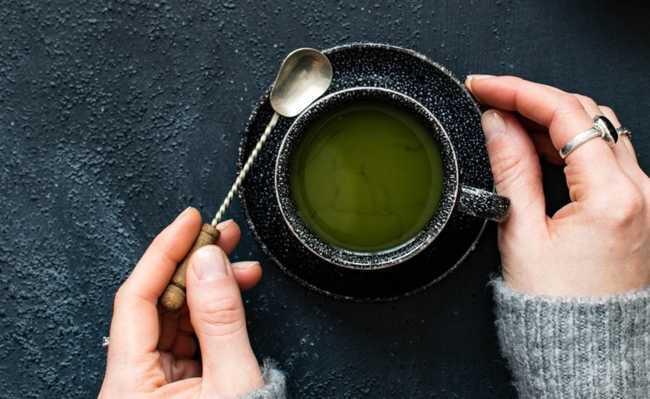Celiac Disease: Symptoms, What Is It, Diagnosis and Treatment
Learn about disorders associated with gluten intake and tips to avoid this protein in your diet

Celiac disease is a permanent gluten intolerance, a congenital autoimmune pathology (occurs when the immune system attacks and destroys healthy body tissues by mistake) that causes damage to the small intestine when the individual ingests gluten, causing malabsorption of nutrients and other symptoms . Gluten, in recent years, has caused great controversy and supporters of the gluten-free diet grow more and more. It is a protein present in cereals such as wheat, rye, oats (when contaminated) and barley. The elasticity of food, such as that found in dear bread rolls, is conferred by it, ensuring that the product grows and becomes soft (learn more about gluten in the article "What is gluten? Bad guy or good guy?").
But do you need to adopt a diet known as gluten free ? The popularity of this diet began with the publication of several studies linking protein intake with allergy, dermatitis, constipation, weight gain, etc. And just say that a diet loses weight to gain millions of adherents, isn't it?
- Benefits of Oats
Better understanding celiac disease, gluten intolerance and non-celiac sensitivity
On average, one in 133 people has celiac disease, or 0.75% of people. The only treatment for celiac disease is not ingesting gluten. Confirmation of celiac disease is done through a small bowel biopsy. If the patient continues to ingest gluten in their diet, celiac disease can increase the risk of developing other diseases such as thyroid, kidney, liver, skin and even cancer. As gluten can be hidden in many unexpected foods, legislation requires manufacturers to include this information on the label to protect people with celiac disease.
- Trans fat: the villain on our plate
However, some people who have not been diagnosed with celiac disease may also benefit from a gluten free diet. What's the explanation for that? There are other disorders related to gluten ingestion, such as wheat intolerance and non-celiac gluten sensitivity.
On average 0.4% of people have gluten allergy and are diagnosed by doctors. Wheat contains gluten, so by cutting gluten out of your diet you can see the benefits. Symptoms of gluten allergy can be dermatological, respiratory and gastrointestinal.
There is still non-celiac gluten sensitivity. This occurs when - despite not having the disorders mentioned above - the person has pain in the abdomen or joints, skin rash, fatigue and mental confusion when ingesting gluten. A gluten free diet usually eliminates these symptoms. Non-celiac gluten sensitivity can be caused by several different reasons and the diagnosis is made by observing and excluding the diagnosis of celiac disease or gluten allergy. There is no specific test to determine this sensitivity - it can be caused by an allergy to fructans, which are sugars present in wheat and other foods, by an activation of the immune system, or even by the nocebo effect (the opposite of the placebo effect) - in this case, the person believes that gluten will have negative consequences in his body and for this reason he ends up presenting them.
Check out the video (with subtitles) for a TED-Ed class on gluten and different forms of intolerance such as celiac disease and non-celiac sensitivity.
Self-knowledge is essential for a balanced life, so observing your body's reactions is critical. Check out some tips that may indicate the presence of celiac disease, gluten allergy or non-celiac sensitivity. Remembering that it is essential to present your personal experiences to a professional for a proper diagnosis and to know the nutritional alternatives so as not to harm your health.
- Digestive problems such as gas, diarrhea and even constipation;
- Keratosis pilaris, also known as "chicken skin", which consists of small red pellets that normally appear on the back of your arms;
- Fatigue, mental confusion or tiredness after eating a meal that contains gluten;
- Diagnosis of other autoimmune disease such as Hashimoto's thyroiditis, rheumatoid arthritis, ulcerative colitis, lupus, psoriasis, scleroderma or multiple sclerosis;
- Dizziness or feeling out of balance;
- Hormonal imbalances such as PMS and polycystic ovary syndrome;
- Headaches and migraines;
- Diagnosis of chronic fatigue or fibromyalgia;
- Inflammation, swelling or pain in joints such as fingers, knees or hips;
- Mood problems such as anxiety, depression and mood swings;
If you have already ruled out celiac disease or gluten allergy with your doctor, and you still feel that you have negative symptoms, talk to your nutritionist about the possibility of having a trial period to identify a non-celiac sensitivity. A good option to check for non-celiac sensitivity is to do a trial period with a gluten-free diet and then reintroduce it. You can go gluten free for a month and see the effects. But since protein takes time to be eliminated from your body, it's good to spend a considerable amount of time without ingesting it until you reintroduce it. Keep a diary of symptoms during the diet, noting any changes over the period, and report them back to your doctor, talking about possibilities of adapting the diet permanently, if necessary.
- Scientists discover possible source of autoimmune diseases such as celiac disease
Check out some tips to avoid gluten intake
Reducing consumption of gluten, wheat (more generally) and processed foods can be beneficial to health if done in a balanced way. People who have serious disorders resulting from gluten ingestion should seek a nutritionist specialized in celiac disease. The professional will know how to indicate the best diet according to your needs. But if you're in the testing phase, the following tips can be very helpful:
Always check labels
Some seemingly harmless foods like veggie burgers or salad dressings may contain gluten. It may also be hidden in some supplements or medications. Coffee is normally gluten-free, but in some cases the powder is mixed with powdered barley (a cereal that contains the protein). Some types of curd or cream cheeses have wheat flour in their composition to obtain consistency. Licorice is a candy made from wheat flour - other candies can contain wheat or barley.
Drinks may also contain gluten
Anyone who loves a beer will be upset to know that the common version of the drink has gluten. However, there are options gluten free of the product on the market and beverages such as wine and sake are naturally protein-free. The Cereal Laboratory of the Federal University of Santa Catarina (UFSC) analyzed samples of ten brands of spirits, check out a list of gluten-free drinks.
Many healthy and delicious foods are naturally gluten free.
Beans, seeds and nuts in their natural form, fresh eggs, fresh meat, fish and poultry (not breaded, coated pasta or marinated), fruits and vegetables and most dairy products. Distilled vinegars are also gluten free.
make substitutions
Just because it's a grain doesn't mean it contains gluten. There are many possible options: rice in all forms (white, black, wild, basmati, etc.), soybeans, corn, buckwheat and quinoa. Wheat flour can be replaced by rice flour, potato starch, cassava flour, pumpkin flour, tapioca, soy flour, etc.
take snacks from home
When you need to eat out and are not sure you will find a gluten-free restaurant, bring your own food. It's not worth going hungry, right? So get ready.
Take a gluten-free dish to social events
At events or gatherings at someone's home you cannot guarantee that the food served will have gluten free options. For this reason, it is delicate to take a gluten-free dish to share or ask about the menu in advance. That way you avoid embarrassment.
receive at your home
A concern on the mind of those who adhere to a gluten-free diet is not being considered "the boring" of the occasion, the one who doesn't eat anything. A great way to keep track of the food you eat and stay in the social circle is to organize some of your friends' get-togethers. Prepare a menu with gluten-free recipes and ask people to bring a drink of their choice. That way they will taste new things and you can eat them all without worrying.Is taking gluten out of the diet healthy?

Removing gluten from your diet in a balanced way can bring benefits. Eliminating refined carbohydrates, noodles and crackers and eating less processed foods reduces excess carbohydrates.










